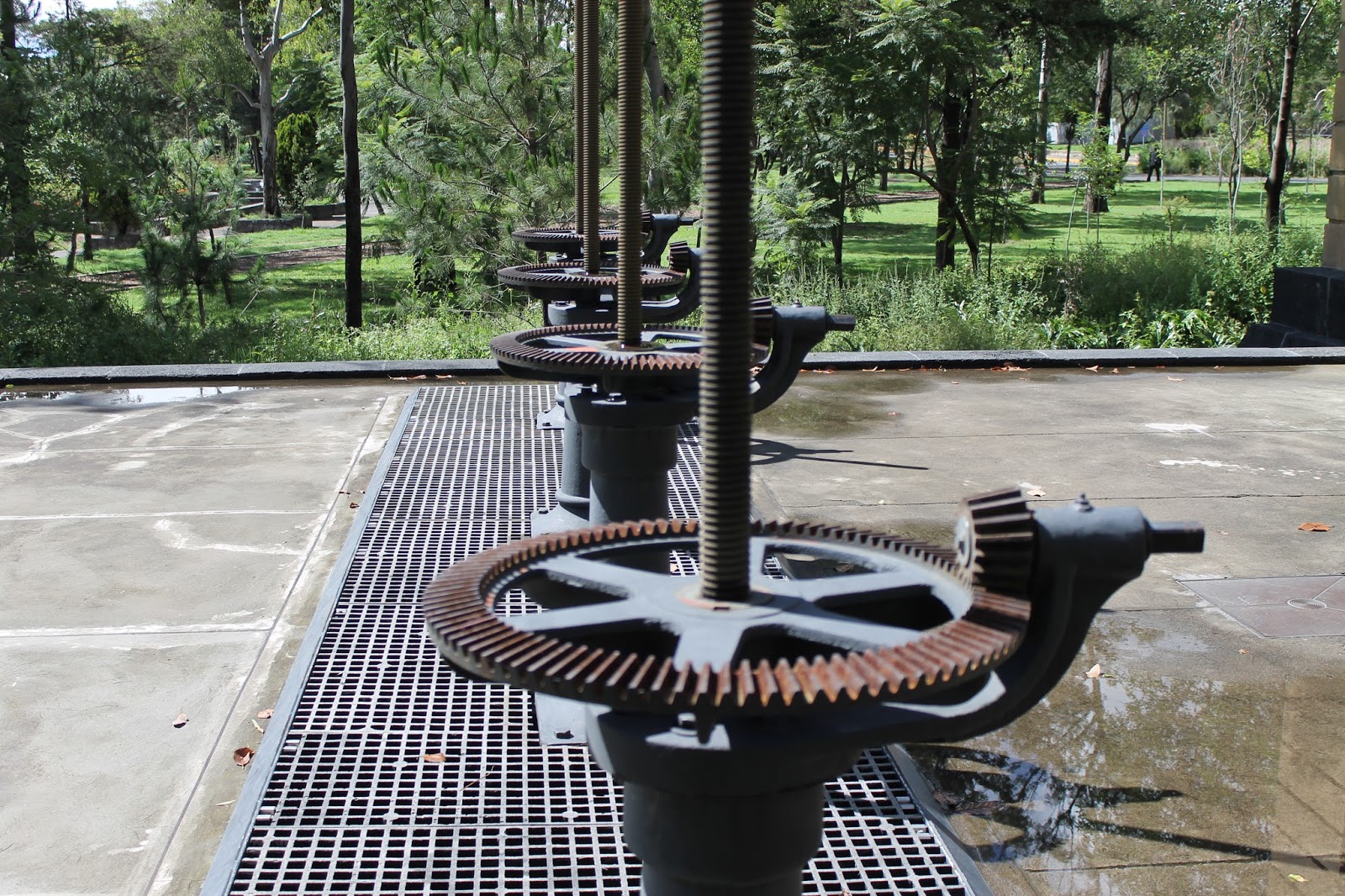Up the hill in Chapultepec's 2nd section, the Carcamo and the Jardin del agua opened as a museum only recently. The structure, a pumping station, dates to the early 1950's as a pumping station for the water supply coming in from the Rio Lerma. The building was designed to direct water from the incoming supply to different reservoirs to serve the city, and it is laden with artwork by Diego Rivera. It operated from the 1950's to the 1990's when it was replaced by underground pipes. By the time the pumping station was decommissioned in the 1990's most of the mosaics and sculpture had been severely damaged by the water flowing through the site.
 |
| El Carcamo with Tlaloc fountain - Chapultepec Park |
The symbolic entrance of water from the Lerma River is marked by a fountain sculpture of the rain god, Tlaloc.
Inside the temple-like structure is the main carcamo chamber which is covered in Diego Rivera murals depicting workers, agriculture and of course, water. The main supply is then split into 4 possible outfalls marked by 4 opening mechanisms inside and outside the building.
Further back in the history of Mexico City's water supply, the springs of Chapultepec were the main supply to Tenochtitlan, the Aztec city and continued to serve the city until replaced by sources from the Lerma River which comes from outside the valley.
The causeway seen in the lower part of the painting contained the Aztec aqueduct from Chapultepec. The aqueduct was replaced in the colonial period. Now, all that remains is a stretch of arches on Av. Chapultepec with fountains on either end signifying the former use.
 |
| a view of the aqueduct from 1902 showing the road and canal beside it. |
Today, the fountain remains, but most of the aqueduct is gone. Following the path of the aqueduct, however, is a bike path. Oddly, I never saw any bikes on this route, possibly because it is in the middle of a major road.
Across from the Salta del Agua is a chapel built for those collecting water from the fountain to give thanks. Like many of the older buildings in El Centro, it is also sinking.


















No comments:
Post a Comment